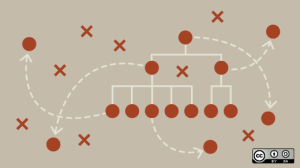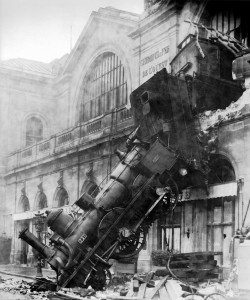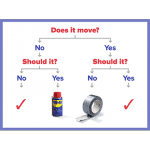
Having visited hundreds of manufacturing plants in the last 15 years, someone recently asked me if there were any traits the most reliable plants all had in common. I have listed below the top 5 signs of a reliable plant. [Read more…]
Your Reliability Engineering Professional Development Site
A listing in reverse chronological order of these article series:
by Doug Plucknette Leave a Comment

Having visited hundreds of manufacturing plants in the last 15 years, someone recently asked me if there were any traits the most reliable plants all had in common. I have listed below the top 5 signs of a reliable plant. [Read more…]

The maintenance manager is known as the leader of the maintenance department. But what if they are unclear on where they are going or need to do? It has the potential to derail the entire department. That is why this series is going to start with the maintenance manager. Once they are clear, the rest of the team can follow.
If you followed the steps in first post of the series, you would be ready to review the roles & responsibilities across the department. This post takes the next step of breaking down the individual role of the maintenance manager to help you on that journey. [Read more…]
by Mike Sondalini Leave a Comment

Capacitance level probes consist of a long rod or cable that protrude into a vessel and its contents. The instrument sets up an electric field between the probe and the tank wall using the contents of the tank as a dielectric (a nonconductor that allows an electric field to exist within itself). If the tank is non-metal, such as plastic or brick lined, two parallel rods are mounted in the level probe or a metal strip can be run on the outside of the tank. The electric field is set-up between the two probes or the probe and the metal strip. Figure 1 shows a simplified layout for a capacitance level probe. [Read more…]

My father taught me at a young age that your name is everything and if you want to be successful in life you have to ensure that when someone hears your name in conversation or reads your name in print that the first thing they think is positive.
The world hasn’t changed from the time he told me that over 40 years ago, in fact today it’s even more critical because we now have the internet and social media.
Good news travels fast.
Bad news travels 100 times faster!
Understanding this, here are 5 tips on what your company can do to build and maintain its reputation and integrity. [Read more…]

Your planner is putting together a scheduler to 8:00pm on a Friday night for Saturday morning. Your storeroom doesn’t have the parts you need and you maintenance supervisor is running back and forth. On top of this, you are unable to meet your maintenance goals, preventing the orgainzation from achieving its goals.
Depending on your organization, you may walk into this type of chaos every morning, and those that don’t, chances are you did at some point.
So what seperates the organizations that have this choas and those that don’t? Clear Roles & Responsibilities is what seperates these two types of orgainzations. This is the first of a series of 6 posts on the topic of Roles & Responsibilities. [Read more…]
by Mike Sondalini Leave a Comment

A work order full of code numbers confuses people. When work order type (breakdown, corrective, modification, etc) is described as Work Order Type ‘04’ you can guarantee that no one knows what ‘04’ is without looking it up on a list.
If a Trade Type is a ‘02’ and it means a fitter, you can be sure that a lot of work order requests from operators will be wrong and they will take the planner’s time to correct. Even more confusing is when the Work Order Type and the Trade Type are both an ‘04’! [Read more…]
by Doug Plucknette Leave a Comment

RCM Implementations don’t fail, believe me if you understand what your getting into upfront, use a proven process to select your asset for analysis AND you commit the resources, your implementation will be a huge success.
Looking back 20 years I can clearly remember performing my first RCM analysis and the ordeal that followed as we struggled to:
a) See the value in the analysis we had just completed (Someone told us that RCM should be performed on every piece of equipment at our plant so we selected one of our most common assets.
b) Free up the resources necessary to implement the tasks that came out of the analysis. [Read more…]
by James Kovacevic Leave a Comment

Often times the maintenance team is focused on preventing failures in the facility. All failures need to be addressed and no failures are acceptable. This mindset may be holding back the uptime in your facility. How is this? After all, if we strive to prevent all failures shouldn’t uptime improve?
Most organizations do not have the resources to prevent every single failure and as such, resources are often pulled from failure to failure. When the organization focuses on the consequences of the failure, instead of the failure itself, it can free up the resources to improve reliability. Once the consequences are understood, running equipment to failure becomes an option. This allows the team to focus on preventing the failures that make a difference to the business. [Read more…]

What readers will learn from this article.
by Doug Plucknette Leave a Comment

Just a bit of humor as we push to the end of another work week!
I turned 55 a few weeks back and just yesterday someone asked me how old I was. I had to stop for a minute to think and when I replied 55 the young Engineer who asked me the question sat back in his chair and said; “Wow! That means you have been working in the Reliability Engineering field like 35 years! I can’t imagine the changes you have seen in your career!” [Read more…]
by James Kovacevic Leave a Comment

PdM & CBM are in almost every discussion that involves improving plant performance and reducing costs. But what is the difference between the two and when should one be used over the other? This post will address those two questions and a few cautions when using these techniques. [Read more…]

What readers will learn in this article.
Cavitation is the occurrence of vapour bubbles in a liquid. A vapour bubble will form when the pressure in a liquid falls so low it boils or the temperature rises so high it boils. [Read more…]
by Doug Plucknette Leave a Comment

Reliability Centered Maintenance is a powerful tool that when applied and implemented correctly can provide numerous benefits including improved equipment reliability, a reduction in unplanned downtime and lower unit cost of product. One of the most impressive benefits of performing a RCM Blitz™ analysis is the identification of failure modes that could result in a health, safety and environmental incident or accident. While some would like to believe that in today’s world where most new designs and capital projects are subjected to numerous design reviews that would include process hazard analysis we still uncover a significant number of health, safety and environmental related failure modes in every RCM Blitz™ analysis. [Read more…]
by James Kovacevic Leave a Comment

You walk into the plant on Monday morning. You are immediately confront by the production manager stating “Press 201 is down. The mechanics are saying it is the clutch again.” You feel an overwhelming sense disbelief. You ran overtime last weekend and replaced clutch at a cost of $30,000. How is it the clutch is failing again?
This scenario may sound familiar. It happens all the time, across many different industries and plants. So what exactly happened? The root cause was not properly diagnosed, and the clutch was replaced. Based on the short life of the new clutch, the root cause was likely something else that is affecting the clutch. [Read more…]

What readers will learn in this article.
Too much stress in metal will cause it to fail. Failure can occur by putting the metal under a once-only load greater than it can take or by continually loading the metal cyclically with a high load less than the breaking load (metal fatigue). [Read more…]